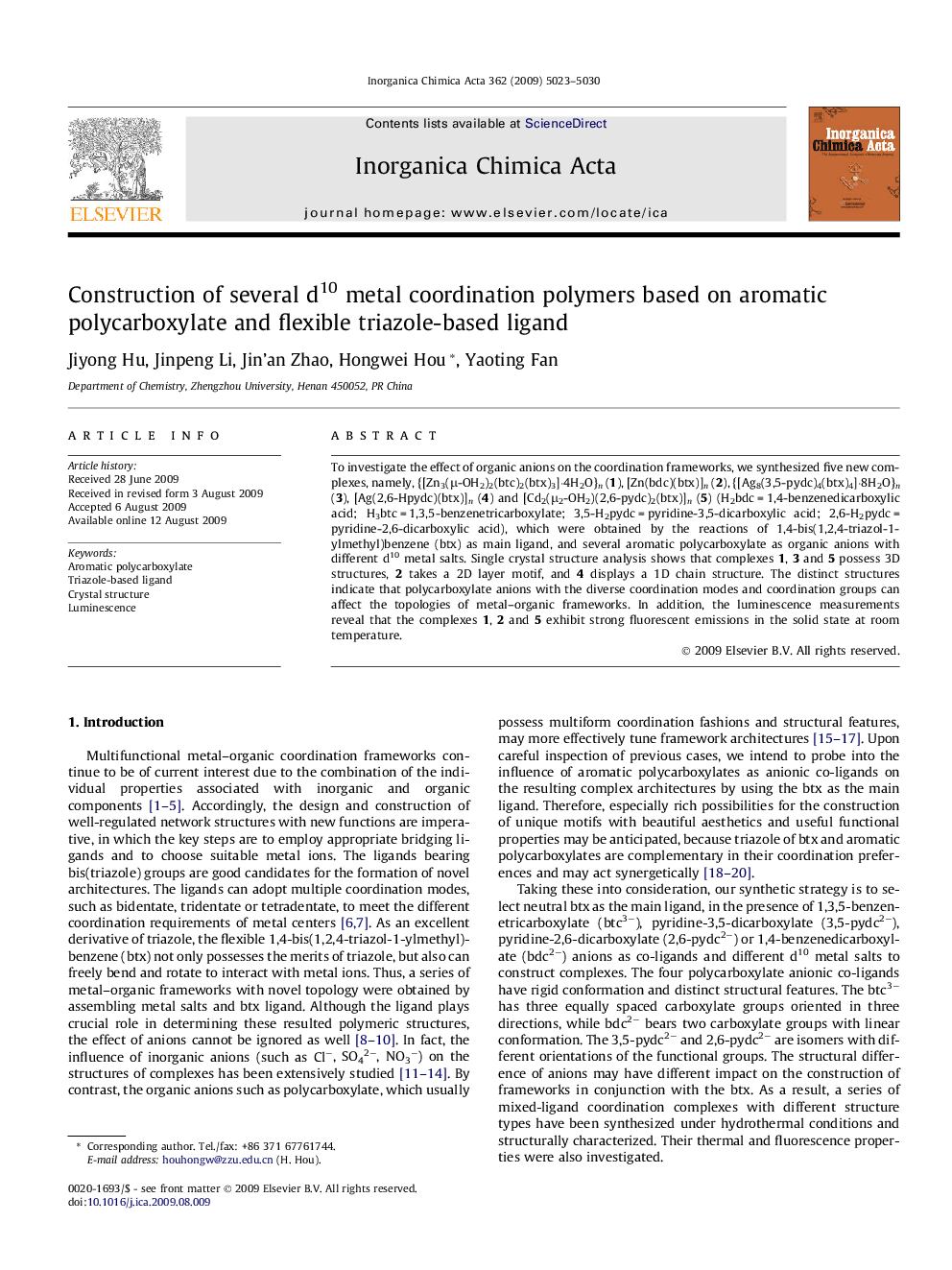| Article ID | Journal | Published Year | Pages | File Type |
|---|---|---|---|---|
| 1309411 | Inorganica Chimica Acta | 2009 | 8 Pages |
To investigate the effect of organic anions on the coordination frameworks, we synthesized five new complexes, namely, {[Zn3(μ-OH2)2(btc)2(btx)3]·4H2O}n (1), [Zn(bdc)(btx)]n (2), {[Ag8(3,5-pydc)4(btx)4]·8H2O}n (3), [Ag(2,6-Hpydc)(btx)]n (4) and [Cd2(μ2-OH2)(2,6-pydc)2(btx)]n (5) (H2bdc = 1,4-benzenedicarboxylic acid; H3btc = 1,3,5-benzenetricarboxylate; 3,5-H2pydc = pyridine-3,5-dicarboxylic acid; 2,6-H2pydc = pyridine-2,6-dicarboxylic acid), which were obtained by the reactions of 1,4-bis(1,2,4-triazol-1-ylmethyl)benzene (btx) as main ligand, and several aromatic polycarboxylate as organic anions with different d10 metal salts. Single crystal structure analysis shows that complexes 1, 3 and 5 possess 3D structures, 2 takes a 2D layer motif, and 4 displays a 1D chain structure. The distinct structures indicate that polycarboxylate anions with the diverse coordination modes and coordination groups can affect the topologies of metal–organic frameworks. In addition, the luminescence measurements reveal that the complexes 1, 2 and 5 exhibit strong fluorescent emissions in the solid state at room temperature.
Graphical abstractTo investigate the effect of organic anions on the coordination frameworks, five new complexes were obtained. The distinct structures indicate that polycarboxylate anions with the diverse coordination modes and coordination groups can affect the topologies of metal–organic frameworks.Figure optionsDownload full-size imageDownload as PowerPoint slide
